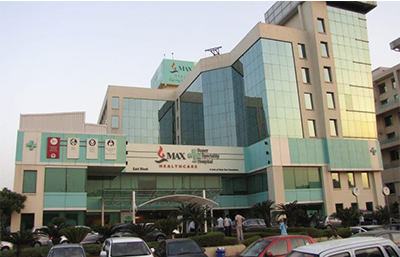A double valve replacement is a replacement of both the mitral and the aortic valve, or the entire left side of the heart. This type of surgery is not as common as the others but recommended for complicated cases of valvular disease. There are 4 Valves in our heart including the Mitral, Tricuspid, Aortic and Pulmonic Valves.
The 4 heart valves play a critical role in the organ’s function by regulating blood flow through the heart and preventing blood from flowing the wrong way. The heart consists of 4 chambers, 2 upper atria and 2 lower ventricles. 2 valves – a one-way inlet valve and a one-way outlet valve – are located in each ventricle (lower heart chamber). In the right ventricle, the tricuspid valve is the inlet valve, sending blood to the lungs via the pulmonary arteries. The mitral valve is the inlet valve for the left ventricle – receiving oxygenated blood from the left atrium from the lungs—and the aortic valve is the outlet valve, which opens into the aorta.
The valves of the heart are responsible for allowing fresh blood to flow through the chambers of heart. Each valve is supposed to close completely after ushering in blood flow. Diseased heart valves aren’t always able to perform the job as well as they should.
Stenosis, or a narrowing of the blood vessels, causes a less-than-normal amount of blood to flow to the heart. This causes the muscle to work harder. Leaky valves can also pose a problem. Instead of closing tightly, a valve may remain slightly open, letting blood flow backwards. This is called regurgitation. The signs of valvular heart disease can include:
- Fatigue
- Dizziness
- Lightheadedness
- Shortness of breath
- Chest pain
- Fluid retention, especially in the lower limbs
Heart valve repair is also a solution for valvular heart disease. In some people, the damage is too far advanced and a total replacement of the affected valve is the only option.
Causes
The reasons for the generation of defects in heart that may lead to double valve replacement can arise due to different factors. In most of the cases, this situation arises after a long period of improper treatment of the symptoms that was present some time ago. The causes that can be remedied after this surgery can be explained as;
- Congenital heart defects : The fault in your heart valve may be due to the improper formation of the valves at the time of birth. Usually, the conditions are nowadays quickly detected and treatment undertaken thereof.
- High Blood Pressure: High blood pressure may cause the valve to experience undue strain, which may reduce their effective activity. Pulmonary hypertension may also be caused double high blood pressure.
- Diabetes: This is one of the primary concerns of heart disease. According to available statistics, individuals suffering from diabetes have a higher rate of contracting heart disease than other causes. It is also stated that adult patients with hyperglycemia have two to four times more fatality probability than from any other diseases. Therefore, diabetes may be also a contributing factor for the double valve replacement surgery.
- SmokingSmoking is a contributing factor in the generation of cardiac disease. Excess smoking reduces the pulmonary capacity, which causes severe strain on the heart and may also lead to various diseases of the valve. According to available statistics, smokers have a 70 percent more death rate from coronary artery disease than do nonsmokers. Therefore, uncontrolled smoking may also be problematic for the cardiac valves.
- Excessive use of alcohol or caffeine: : Caffeine increases the heart rate and excess consumption of caffeine can also harm the heart tissues. This is also a significant cause for heart diseases.
- Drug abuse: Indiscriminate and uncontrolled abuse of drugs can lead to cardiac diseases.
- Stress: Stress and tension can cause palpitations in the heart, and also harm the valvular structure.
- Valvular Heart Disease: The diseases in the valves can cause the different problems in it, which may be only corrected by the surgery, rather than a course of medicine or physiotherapy.
Symptoms
The indications of the conditions that require this surgery may be similar to other cardiac diseases involving cardiac valves. However, the intensity will vary depending on the age of the patient. The key indications which can convince the physician to suggest a double valve replacement can be listed as:
- Exhaustion
- Shortness of breath.
- Poor oxygenation
- Discoloration of skin
- Breathing difficulties
- Pain in the chest
- Withholding of fluids, specifically in the lower limbs.
- Heart murmur
- Stroke
Diagnosis
Issues in the valve may not be detectable in the premature ages of the patients. Depending upon the symptoms, the attending doctor of medicine may ask for one or more of the following test;
- Echocardiogram: This exam can assist doctors in diagnosing the state of the atrial and ventricular area, and the cause and seriousness of your complaint.
- Chest XRAy: An X-ray image helps your doctor to examine the state of your heart and lungs. An X-ray may make out situations other than a cardiac defect that may explain your symptoms of illnesses.
- Magnetic resonance imaging (MRI): This technique uses electromagnetic waves to draw a 3D image of your heart. The doctor may ask for this test if the state of the valves cannot be assuredly recognized.
Other tests like Electrocardiogram and Cardiac catheterization may be suggested by the physician according to the cardiac circumstances of the patient.
Treatment
- Minimally Invasive Spine Surgery: This is where the doctors make small incision in the patient’s body. One of the most routine techniques is the cardiac catheterization. In this method, doctors introduce a thin catheter into a blood vessel leading it to the heart. Through the catheter, doctors fix a plug or a new valve to replace the faulty one in the heart of the patient. For valves of non-biological origin, the patient may have to take blood-thinners for the rest of his life. If valve made from biological sources are used, then this kind of medicine need not be taken. However, the final decision will be taken by the surgeon-in-charge.
- Open Heart Surgery: Patients with serious cases of valvular problems can be treated with open-heart surgery. Under heavy sedatives and external oxygen support, the thoracic area of the patient is opened to expose the heart and the diseased valve is replaced by the surgeon with a new artificial valve. Sometimes, minimally invasive surgery may be adequate for surgical treatment.










